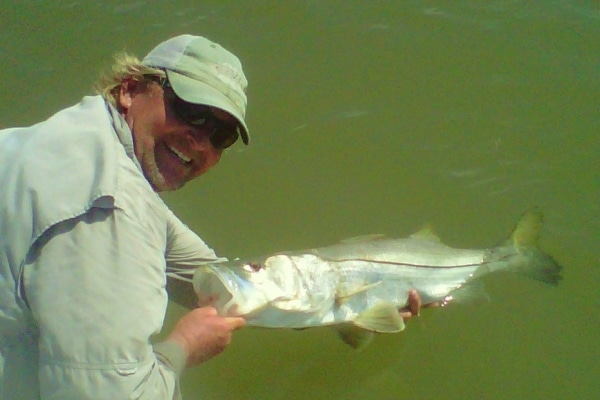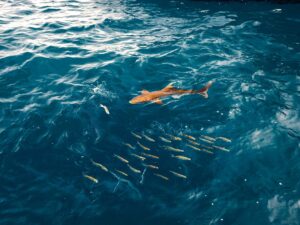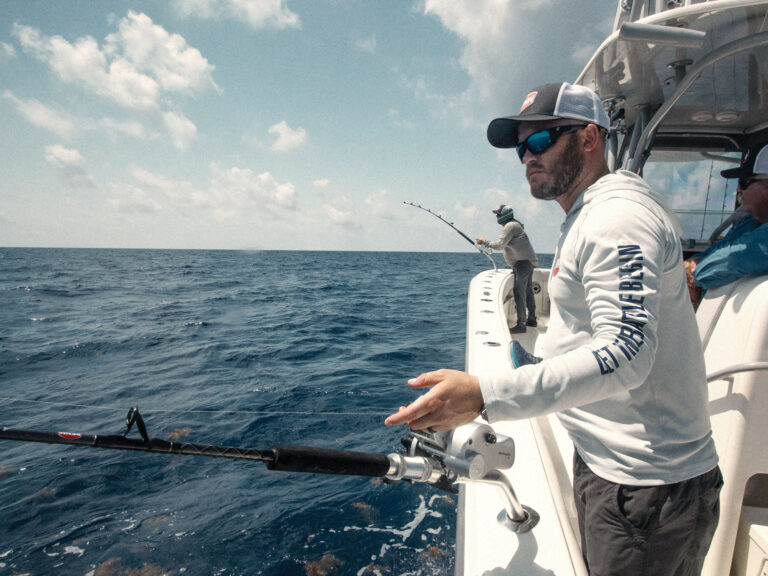
Naples Backcountry
In South Florida, the snook unequivocally sits at the top of the inshore target list. One of the most sought after species in Florida, its tenacious reputation has also earned it followers around the world — anglers who refer to themselves as ”snookers.” Yet the snook is no pushover. These fish frequent heavy structure, and they are absolute masters of their environment. Hooking them is one thing — landing them is another.
Most people think a snook is a snook when, in fact, 12 different kinds inhabit both the Atlantic and the Pacific. We could not, however, find any records of anyone catching one on fly in the Pacific. That said, most anglers agree that all snook behave similarly no matter where you fish for them.
Snook generally can be found in a variety of inshore and coastal waters and can tolerate a huge range in salinity, including almost completely fresh water. But they are not tolerant of cold water at all. Indeed, they cannot survive water temperatures below 60 degrees for long, though they will easily tolerate water into the 80s.
The keys to locating them are simple: Structure and current. Snook prefer relatively shallow areas of heavy structure, including anything from mangroves, seawalls, bridges and shallow reefs, pilings and wrecks to submerged rubble. The other key is moving water. ”If you don’t have moving water, you aren’t snook fishing,” says Matt Bagley, who specializes in snook fishing along Florida’s southeast coast. ”Even so, despite the large currents that come with the full moon, I don’t like fishing right after the full moon because the fish gorge themselves.”
Bagley also does most of his fishing at night. ”Snook prefer quiet conditions, and they tend to spook easily with lots of boat traffic. At 2 or 3 o’clock in the morning that’s not a problem, and since snook feed primarily at night anyway it just makes sense.”
Tom Mohler, who guides along Florida’s west coast, agrees. ”Summertime has perfect conditions for sight fishing for snook under lighted piers at night, when there are fewer people looking for them. But moving water is definitely the key. If the water’s not moving at one location, its best to just pick up and move on,” he says.
While snooks feed most actively at night, that doesn’t mean you can’t catch them during the day. ”You just have to remember that snook have very sensitive eyes, so during the day they will stick to the dark side of a shadow line along structure,” says Bagley. Mohler also points out that along the west coast of Florida, July and August are the perfect times to walk the beaches early in the morning looking for snook in the surf. ”Daytime is also the best time to find snook during the winter, when they are out looking for warmer water. I prefer not to stress them when it’s cold, though,” he says.
Snook are the ultimate ambush predator and use structure primarily as cover. They have a nasty habit of breaking for it once hooked. If that’s not enough, their gill rakers can cut through all but the heaviest monofilament shock tippets with ease. ”When we fish them, unless the angler insists, we use a ‘Stuart homeboy leader’ — a piece of straight 30-, 40-, 50- or even 60-pound monofilament. It’s the only way to catch them in heavy structure. When they are out on the flats, that’s the place to fish with an IGFA leader,” says Bagley. Mohler prefers a similar setup and suggests that anything less than 20-pound line doesn’t stand a chance against the snook’s raspy mouth and gill rakers.
While snook don’t migrate like some species do, understanding their spawning cycle and corresponding movement patterns can help point to their location. During the fall in Florida, snook frequent inlets, passes and beaches. After the first cold front, snook usually move inland to find more agreeable water temperatures. During the winter months, they hang out wherever they can find warmer water. ”A good place to look is around lights that are close to the waterline. That little extra heat thrown off by the light will attract bait and snook,” says Bagley.
As the water temperature increases in spring, these fish begin to move toward spawning grounds near the mouths of bays, rivers, creeks and canals. Once summer rolls around, snook begin spawning and are easiest to catch. Both Mohler and Bagley prefer summer to any other time. ”I prefer the closed season (summer in Florida) for several reasons. First, fewer people fish for them at this time of year because they can’t keep the fish they catch. Plus you can find the larger females. The only downside is that the smaller males tend to feed more aggressively during the summer, and the females are finicky. Even so, they are all concentrated in a few spots, so it makes them far easier to target,” says Bagley. ”The most difficult times to find them are in the spring between April and May when they are on the move or mid-September to November during the mullet run. There’s so much bait in the water that they feed selectively.”
Keep in mind that their diet consists primarily of small fish and crustaceans. But when actively feeding, snook will hit just about anything in the water, including all manner of surface flies and streamers. Regardless of season, Bagley prefers a simple polar-fiber minnow between 2 and 4 inches. ”Around dock lights in the winter I use flies as small as #4 down to #8. Under bridges I’ll use larger ones, from #1 to 1/0 or 2/0. During the fall mullet run I prefer big, heavy Deceivers, anywhere from 3/0 to 5/0. Colors are simple — dark water, dark fly; light water, light fly,” says Bagley. He also likes Whistlers, deer-hair mullet flies and Seaducers. Mohler prefers shrimp patterns in addition to the baitfish imitations, and suggests keeping the flies small. ”As for specific size and color, I just try to match the hatch,” he says.









